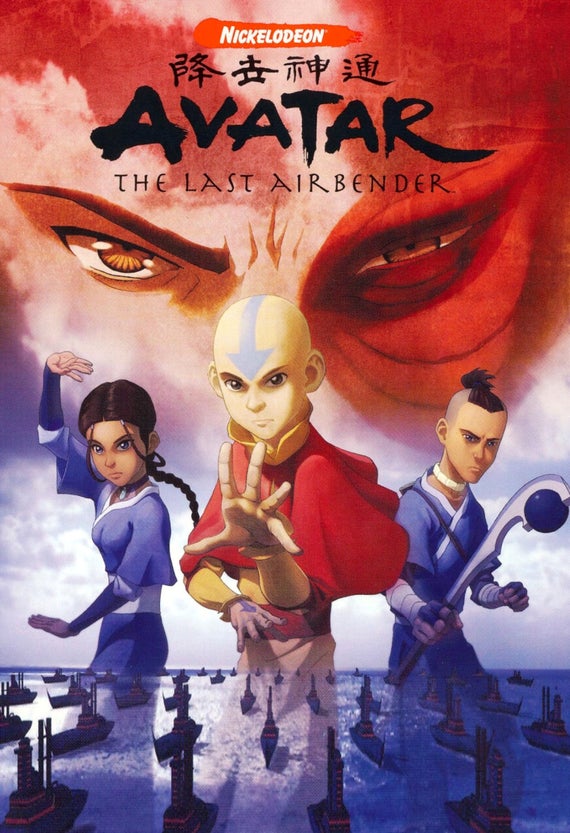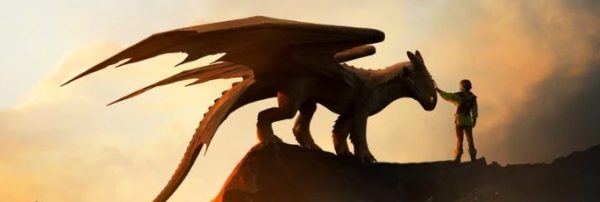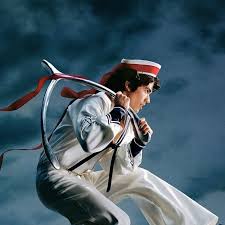“Avatar: The Last Airbender”’s recent popularity is well-deserved, long-overdue
Warning: Spoilers for “Avatar: The Last Airbender” ahead
At first glance, “Avatar: The Last Airbender,” initially released in 2005, looks like a trivial kids’ cartoon show with a goofy protagonist, an archetypical angsty villain and a whimsical setting. But if you actually watch the show, you’ll see that it has so much more to offer: phenomenal character development, incredible world-building and a highly engaging plot — not to mention hilarious scenes like “That’s rough, buddy,” and “I’d rather kiss you than die.”
Michael Dante DiMartino and Bryan Konietzko managed to create a show that seamlessly combined highly complex characters, mature themes, humor and tragedy — all while marketing it towards 6 to 11-year-old children. When the show was released on Netflix May 14, I quickly rewatched it, and it was still the same spectacular show I remember and love from 10 years ago.
Evidently, I’m not the only one who feels this way. After its release on Netflix, “A:TLA” spent a record-breaking 60 days on Netflix’s Top 10 List as old and new fans came together to enjoy the show. Its popularity and respect is well-merited and justified.
The show takes place in a world with four nations: the Air Nomads, the Water Tribes, the Earth Kingdom and the Fire Nation. In this universe, there are people who can bend one of the four elements: water, earth, fire and air. And then there is the Avatar — master of all four elements and responsible for keeping peace and balance in the world — who is reborn as a new person in a different nation every lifetime. For fans of the magical and mystical aspect of “Harry Potter” and “Percy Jackson,” this show is perfect. Benders in the show bend the elements in unique and beautiful ways — from battling with them to creating with them. There really are no limits to what people can do with bending.
The four nations lived peacefully and separately in harmony, but everything changed when the Fire Nation attacked the other nations. Starting an all-out war as they aimed to conquer territories all over the world, the Fire Nation disturbed the peace and balance that once existed. They completely wiped out the Air Nomads in a mass genocide, stole waterbenders from the Southern Water Tribe to imprison them and made their way across the massive Earth Kingdom, imposing their rule. It seemed like only the Avatar could stop them and restore balance, but he vanished.
The Fire Nation searched and hunted for the Avatar for 100 years as he was the only threat to their supremacy. Fire Lord after Fire Lord failed to find the Avatar, and it seemed like a mission with no end. The people of the three other nations believed the Avatar, their last source of hope, to be dead. They blamed him for turning his back on the world and allowing the Fire Nation to wreak havoc on the world.
The war goes on for 100 years before Southern Water Tribe siblings Katara and Sokka discover the new Avatar — an airbender named Aang — who had been frozen in an iceberg for the past 100 years. Katara is the last waterbender of her tribe, and Sokka, a non-bender, is an aspiring warrior. They lost their mother to a Fire Nation soldier, and their father is fighting in the war. Aang is the last airbender, having escaped the Fire Nation’s genocide of the four air temples by chance. After saving the Southern Water Tribe from Zuko — the banished Fire Nation prince cursed to chase the Avatar to restore his honor and return home — Aang sets out to travel the world with Sokka and Katara to master the four elements and ultimately defeat the Fire Lord to restore balance to the world.
In each of the three seasons, Aang masters a different element; first water, then earth and finally fire. As he travels the world with his friends to find bending masters, viewers get to see different aspects of war. The Southern Water Tribe, a small village suffering from the loss of its waterbenders. The Northern Water Tribe, completely isolated from the world to protect its people from the war. The Air Temples, empty and devoid of life after the genocide. The Earth Kingdom, the final stronghold fighting off the Fire Nation. The Fire Nation colonies, enduring imperialism and exploitation at the hands of Fire Nation leaders. And the Fire Nation itself, which is full of propaganda about its greatness and sharing that greatness with the rest of the world. No nation is perfect, but no nation is completely good or bad.
One of the best things about this show is its ability to convey complex ideas in a way that makes sense to children. Maybe not all kids understand that they are getting a history lesson, but they are in a subtle way. It makes these deep, traumatizing topics more manageable for kids to comprehend. Imperialism, propaganda, genocide, corruption — and not just in the Fire Nation. The Earth Kingdom capital at Ba Sing Se is the final stronghold in the war, a place for refugees, a place of hope. But Ba Sing Se is not what it looks like; the Earth King is merely a puppet of his advisor, who has kept the truth of the war hidden from the King and the people of Ba Sing Se. Control of Ba Sing Se lies with the Dai Li, the secret and elite police force that works to capture and brainwash political dissidents — the “cultural authority of Ba Sing Se.” Ba Sing Se is one of many examples of complex ideas in “A:TLA” that are extremely interesting and deep — more so than you would expect from a simple kids’ show.
The plot of this show manages to be complex yet easy to understand. Intense yet fun. There are elements of tragedy that really make the viewer feel for the characters, and there are elements of humor that I still find funny today. At the end of every season, there is a climax in the story that still brings me chills. The animation and visual aspect is spectacular; it really brings the show to life. And the intensity and excitement of the final battles keeps you on the edge, even if you already know what happens. There are small details throughout the show — easter eggs, if you will — and when you notice them, they give the show even more meaning. Even though I have rewatched the entire show at least five times, it never fails to keep me engaged.
Finally, “A:TLA” has some of the best character development I’ve ever seen. Aang changes from a silly kid into a mature Avatar; Katara changes from a traumatized child into one of the greatest waterbending masters in the world; Sokka changes from a misogynistic and arrogant kid into a respectful and powerful warrior. And finally there’s Zuko, a banished Fire Nation prince seeking to restore his honor who follows a path of self-discovery — and ends up switching sides to help the Avatar restore balance. Ask any “A:TLA” fan why they like the show, and they will always bring up Zuko’s character arc. Zuko has one of the most beautifully orchestrated and developed character arcs that I’ve ever seen on TV. You can see him as a scared boy seeking acceptance from his father; you can see him experiencing the world and understanding the damage the Fire Nation has caused to the world; you can see him beginning to question Fire Nation propaganda when he returns. When he finally joins the Avatar to help him defeat the Fire Lord (his father), it just makes sense. Although Zuko is the villain throughout most of the show, viewers can’t help but root for him. We feel for him, and at times, we question whether we even want him to lose. Zuko’s redemption arc helps us see that no person is truly good or bad and that people can change. Everybody wants to create a character arc like Zuko’s, but they’re simply not good enough writers.
It is easy to be put off by the animated nature of the show and the characters’ young voices. Many will brush this show off as trivial and immature. But, as I’ve stressed, they are missing out on a spectacular show. “A:TLA” is indeed a kids’ show, but it teaches kids about things that teenagers and adults could stand to learn about as well. It teaches us about good and evil, peace and balance, friendship and love. It teaches us to love and cherish the people around us. It teaches us about the presence of good and evil in the world — and how you can find both in places you didn’t expect to find them in. The concept of duality is ever-present throughout the show, which causes us to take a step back and rethink what we thought we knew about the world. Watching this show can change the way you see the world — good versus bad, chaos versus balance, oppressors versus victims.
If you think I’m overemphasizing the message and meaning of the show, I encourage you to go watch it. Yes, “A:TLA” is a kids’ show, but it is also so much more.






